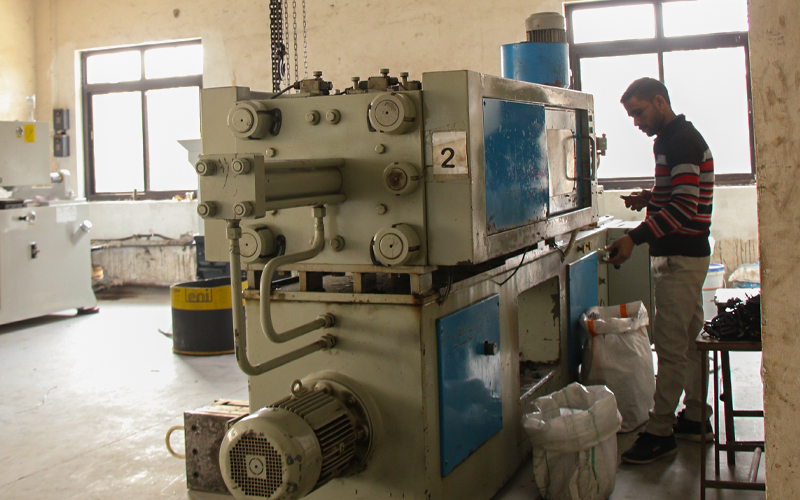







Injection moulding involves the high-pressure injection of a polymer into a mould where it is shaped. The individual parts of this process are very short. The whole injection moulding process usually lasts from 2 seconds to 2 minutes. There are four stages in the cycle. These stages are the clamping, injection, cooling, and ejection stages.
Clamping
Before the mould is injected with material, both halves of the mould have to be closed. They are closed by a clamping unit. Both halves are then attached to an injection moulding machine and one half can slide. Material is then injected as the clamping unit pushes the halves together and both halves are held tightly while the material is injected. Larger machines (machines with more clamping power) take longer to close and clamp the mould.
Injection
Plastic pellets are fed by means of a hopper into the injection moulding machine. These pellets move towards the mould by the injection unit. The heat surrounding the barrel and the pressure serve to melt the pellets. The volume of material injected is called the ‘shot’. This injection time is finished when 95%-99% of the mould is filled. It is hard to calculate exactly the injection time because the flow of the plastic is always changing and dynamic. Injection time can be estimated by other factors such as injection pressure, power, and shot volume. The injection pressure can range from 35-140 MPa. The rate of injection and the pressure which can be reached are determined and controlled by the hydraulic system in the machine.
Cooling
The cooling process involves the plastic inside the mould that begins to cool after it makes contact with the interior mould. As the plastic cools when it hardens it will take the desired shape. The part may shrink slightly during cooling. Only when the cooling period has elapsed can the mould be opened.
It is from the wall thickness of the part and the thermodynamic properties of the plastic that the cooling time can be estimated.
Ejection
The last stage is ejection from the machine. This is done with an ejection system. When the mould opens the part is pushed out, Force must be used because the part shrinks and sticks to the mould. The mould can be shut again after ejection and another shot can be injected for the process to begin again.
For Your Information:
• To meet and exceed customers’ requirements. • Continuous up-gradation in technology to achieve zero defects. • Team Work and zilch defect delivery for a better experience.
• Our labs are validated with high-end types of equipment. • Experienced workforce and ultra-modern manufacturing facilities. • To produce consistent quality of components, value for money, & ensure timely delivery.
Visual Inspection is done after the innovation process to ensure zero defect part supply.
